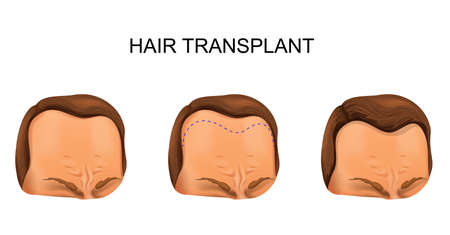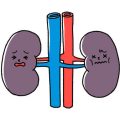Understanding Tendon and Ligament Injuries
Tendon and ligament injuries are among the most common musculoskeletal problems faced by people across the UK, affecting individuals of all ages and activity levels. Tendons, which connect muscles to bones, and ligaments, connecting bone to bone, play crucial roles in maintaining joint stability and movement. These structures are particularly vulnerable during activities that involve repetitive motion or sudden strain—circumstances often encountered in both everyday life and popular British sports such as football, rugby, cricket, and tennis. While athletes and those leading highly active lifestyles are at greater risk, it is important to recognise that tendon and ligament injuries can also occur during routine activities like gardening, walking the dog, or even slipping on a wet pavement. Factors such as age-related wear and tear, poor footwear choices, or underlying health conditions like diabetes can further increase susceptibility. By understanding the nature of these injuries—their typical causes and who may be at risk—we lay the groundwork for more effective prevention, timely diagnosis, and appropriate care tailored to fit the demands of daily living in the UK.
2. Signs and Symptoms to Watch Out For
Recognising the early warning signs of tendon and ligament injuries can make a significant difference in your recovery journey. Early intervention is key, as it may prevent further damage and support a smoother rehabilitation process. Below, we’ll explore some common indicators to be mindful of, along with practical advice on when to seek professional help within the NHS framework.
Common Warning Signs
| Sign or Symptom | Description | What It Might Indicate |
|---|---|---|
| Pain or Discomfort | Aching, sharp, or throbbing pain around a joint or muscle, especially during movement | Potential strain, sprain, or tear in tendon/ligament tissue |
| Swelling | Visible puffiness or warmth around the affected area | Inflammation commonly associated with injury or overuse |
| Bruising | Discolouration of the skin following an injury | Possible internal bleeding from torn soft tissues |
| Restricted Movement | Difficulty bending, straightening, or rotating a joint fully | Ligament instability or significant tendon damage |
| Popping or Clicking Sounds | Noises when moving the joint or limb, sometimes accompanied by pain | A sign of acute injury or structural changes in tissue |
| Weakness or Instability | Sensation that a joint might ‘give way’ under pressure or during activity | Ligament laxity or partial rupture needing attention |
When to Seek Professional Advice Through the NHS
- If you experience severe pain that does not improve after a few days of rest and self-care.
- If swelling is persistent or rapidly increasing.
- If you notice pronounced bruising without an obvious cause.
- If there is any visible deformity in the joint or limb.
- If you are unable to bear weight on the affected area, particularly if it involves the knee, ankle, or foot.
- If you feel ongoing weakness or instability when using the limb.
- If symptoms interfere with your everyday activities at home, work, or school.
NHS Pathways for Support and Assessment
The NHS provides several routes for assessment and treatment:
- Self-Care: For mild symptoms, rest, ice application (wrapped in a tea towel), gentle compression with an elastic bandage, and elevating the injured part can often help initially.
- NHS 111: If you’re unsure about your symptoms and need guidance outside GP hours, calling 111 can provide tailored advice.
- Your GP: Arrange an appointment if symptoms persist beyond a week or worsen. GPs can refer you to physiotherapy services or order diagnostic imaging if needed.
- A&E: Attend Accident & Emergency if you have severe pain, sudden inability to move the limb, numbness, tingling, or obvious deformity.
A Gentle Reminder for Ongoing Wellbeing
If you’re ever in doubt about your symptoms—especially if they prevent you from carrying out normal activities—don’t hesitate to seek advice. Early assessment can make all the difference in ensuring a safe and supported recovery. The NHS is here to help every step of the way.

3. Diagnosis: Getting the Right Help
When it comes to tendon and ligament injuries, receiving a timely and accurate diagnosis is essential for effective recovery. In the UK, your first step is usually to book an appointment with your local GP (General Practitioner). During this initial visit, your GP will listen carefully to your description of symptoms and may gently examine the affected area, checking for swelling, tenderness, or restricted movement. They’ll also ask about how the injury occurred and any previous issues you might have had.
If your GP suspects a more serious tendon or ligament issue, they may refer you to a specialist—such as an orthopaedic consultant or a physiotherapist—for further assessment. This referral process ensures that you receive expert advice tailored to your specific needs, whether it’s ongoing pain, difficulty moving, or concerns about long-term mobility.
In terms of investigations, several types of scans and assessments are commonly used in the UK. An X-ray might be arranged to rule out associated fractures, while soft tissue injuries are more accurately assessed using ultrasound scans or MRI (Magnetic Resonance Imaging). These scans help provide clear images of tendons and ligaments, allowing specialists to pinpoint the extent and exact nature of your injury. Sometimes, additional tests such as blood work may be recommended if there’s suspicion of underlying conditions contributing to your symptoms.
Throughout this journey, you can expect open communication with your healthcare team. NHS staff are experienced in supporting people through these processes with kindness and clarity. You’re encouraged to ask questions at any stage—whether about test results, next steps, or what the findings might mean for your daily life. The pathway is designed not only to diagnose but also to reassure and guide you towards the best possible outcome for healing and long-term wellbeing.
4. Treatment Options Available
The management of tendon and ligament injuries in the UK is shaped by a blend of evidence-based medical practice, NHS guidelines, and community care resources. Early diagnosis and a tailored treatment plan are vital to achieving optimal recovery and maintaining quality of life, especially for those with ongoing care needs. Below is an overview of current best-practice approaches:
Conservative Management
Most mild to moderate tendon and ligament injuries respond well to non-surgical interventions, which aim to reduce pain, restore function, and prevent further damage. These include:
| Treatment Option | Description | NHS/Community Approach |
|---|---|---|
| Rest & Protection | Activity modification or temporary immobilisation (e.g., splints, braces) | Self-care advice from GPs; community nursing support as needed |
| Physiotherapy | Structured exercise programmes to rebuild strength and flexibility | NHS physiotherapy referral; sometimes local council-funded classes |
| Pain Management | Use of paracetamol, NSAIDs, or topical gels to relieve discomfort | Guidance from pharmacists or prescribers; pain clinics for complex cases |
| Cold/Heat Therapy | Applying ice packs in the acute phase or heat during chronic stages | Advice provided via NHS Direct, GPs or community rehabilitation teams |
| Assistive Devices | Cane, crutches, or orthotic supports to aid mobility and healing | Occupational therapist assessment through NHS or social care services |
Surgical Interventions
If conservative measures fail or if there is significant structural damage (such as a complete rupture), surgical repair may be recommended. The NHS offers a range of procedures depending on the severity and location of the injury:
- Arthroscopic surgery: Minimally invasive technique for repairing torn ligaments or tendons.
- Open repair: Traditional approach used for larger tears or when reconstruction is necessary.
- Tendon transfer/graft: For severe cases where original tissue cannot be salvaged.
Surgical pathways typically include a multidisciplinary team review, pre-operative assessment, post-operative physiotherapy, and community-based follow-up care to support long-term recovery at home.
The Role of Community Care in Recovery
The NHS works closely with local councils, voluntary organisations, and social care providers to ensure individuals receive holistic support during their recovery. This may include home visits from physiotherapists or occupational therapists, access to reablement services, and information sessions for carers. The emphasis is always on patient-centred care: empowering people to manage their condition confidently while remaining active in their communities.
5. Rehabilitation and Ongoing Support
Rehabilitation plays a vital role in the recovery from tendon and ligament injuries, especially when considering the unique context of the UK’s healthcare system and community resources. A well-structured rehabilitation plan is not only essential for optimal physical recovery but also for supporting overall wellbeing and return to daily life or sporting activities.
Tailored Rehabilitation Strategies
In the UK, rehabilitation often begins with NHS or private physiotherapy services, focusing on restoring joint movement, strengthening surrounding muscles, and gradually increasing activity levels. Early-stage rehab typically centres on gentle range-of-motion exercises, followed by targeted strength training as pain subsides. For more complex injuries, hydrotherapy may be recommended, taking advantage of local pools or community health hubs. It is important to personalise each programme to fit individual needs, injury severity, and pre-injury activity levels.
Integration with Community Physiotherapy
Community-based physiotherapy offers accessible ongoing support across many parts of the UK. Patients are encouraged to maintain regular appointments with their physiotherapist, who can adapt exercise regimes and provide hands-on guidance. Many local councils and sports clubs also offer group classes focused on injury prevention and recovery, fostering a sense of community during rehabilitation. Open communication between your GP, consultant, and physiotherapist ensures everyone is working towards your goals together.
Long-Term Management and Returning to Activity
Sustaining progress after formal rehabilitation concludes is crucial. This may involve continued home exercises, attending follow-up reviews, and participating in local wellness programmes. Gradual reintroduction to sports or active hobbies should be done under professional advice—never rushing the process to avoid setbacks. For those returning to work or household routines, occupational therapy support may be beneficial, offering practical adaptations where needed.
Above all, patience and persistence are key. Leaning on available community resources and seeking encouragement from loved ones can make a significant difference on the journey back to full participation in everyday life. Remember: in the UK, you are never alone in your recovery pathway—local services, experienced professionals, and peer groups are here to help every step of the way.
6. Living Well During Recovery
Practical Tips for Maintaining Physical and Emotional Wellbeing
Recovering from a tendon or ligament injury can be a challenging journey, but with the right approach, you can maintain both your physical and emotional wellbeing. Prioritise gentle movement as recommended by your physiotherapist; this might include light stretching, walking, or prescribed exercises to promote healing without overexertion. Nutrition also plays a vital role—focus on a balanced diet rich in lean protein, fruit, vegetables, and whole grains to support tissue repair. Emotionally, it’s natural to feel frustration or impatience during recovery. Mindfulness practices such as deep breathing, guided meditation, or even short walks in nature can help manage stress and foster a positive outlook.
Guidance for Work and Family Life
Returning to work or managing family responsibilities while recovering requires honest communication and practical adjustments. Speak with your employer about phased returns or temporary modifications to your workload if needed—this is quite common practice in the UK and employers are generally supportive of gradual reintegration. At home, don’t hesitate to ask family members for assistance with daily tasks like cooking, cleaning, or childcare. Setting clear boundaries and pacing yourself will help prevent setbacks and ensure steady progress.
Local Resources for Further Support
The NHS provides comprehensive support for those recovering from musculoskeletal injuries. Your GP can refer you to local physiotherapy services or occupational health specialists who offer tailored advice and rehabilitation programmes. Many communities have support groups—either in person or online—where you can share experiences and tips with others facing similar challenges. Charities such as Versus Arthritis or the Chartered Society of Physiotherapy offer helplines, resources, and guidance specific to tendon and ligament recovery.
Staying Connected
Maintaining social connections is key during recovery. Reach out to friends and neighbours for regular check-ins or light social activities that suit your current abilities. Local community centres often host gentle exercise classes or social clubs where you can stay engaged without overexertion.
A Gentle Reminder
Remember, recovery is not a race. Allow yourself time to heal, celebrate small milestones, and seek help when needed. You are not alone—support is always available within your community and through local health services.


